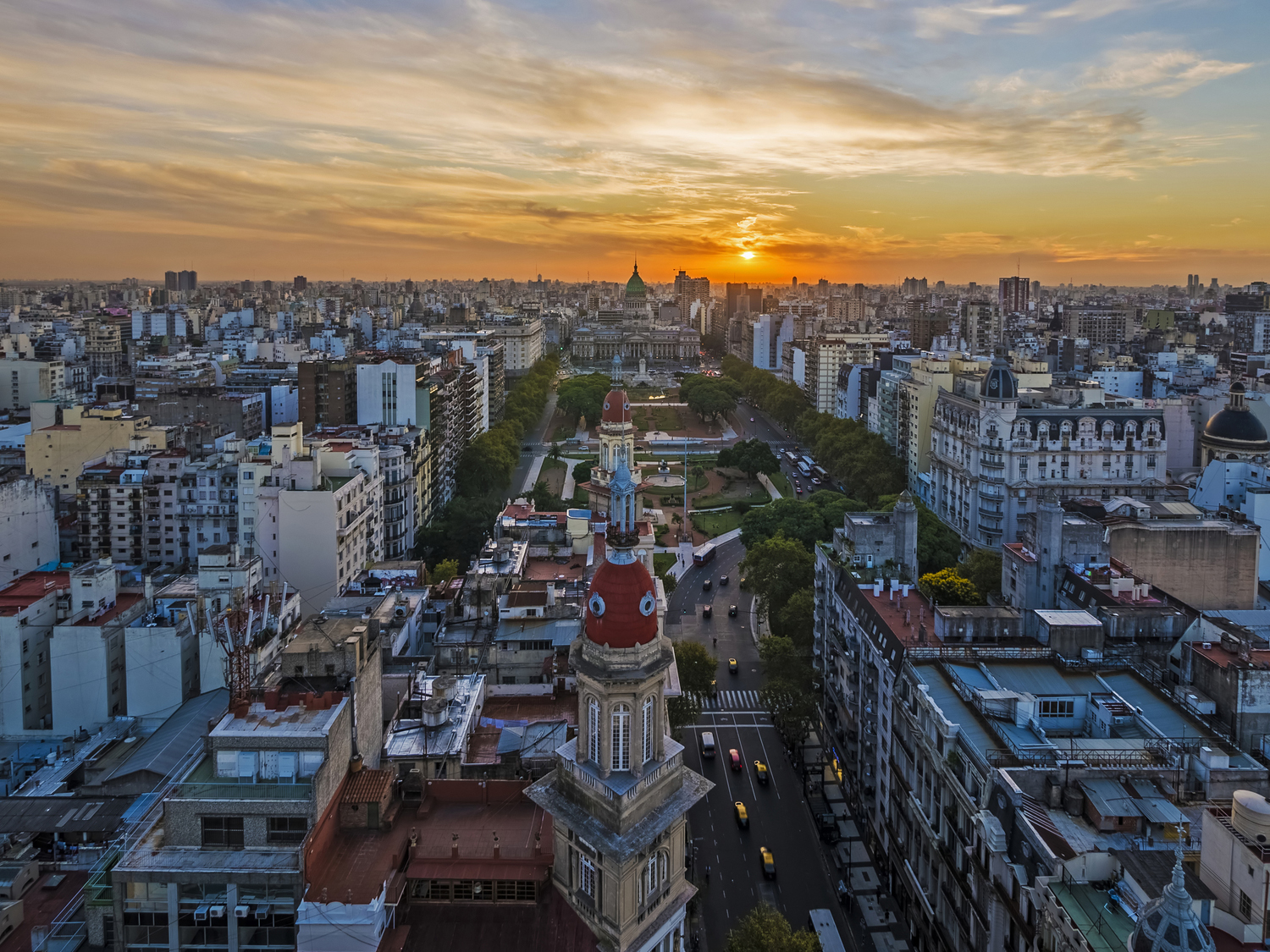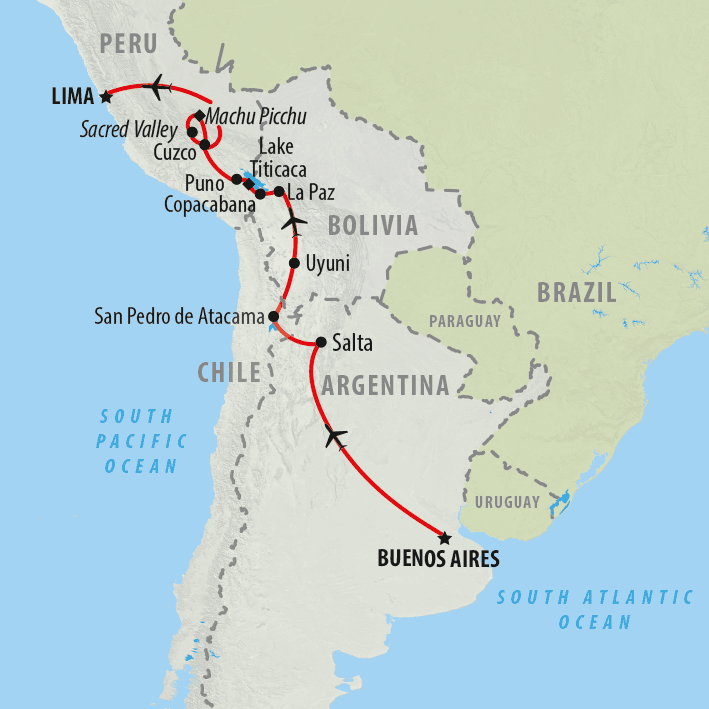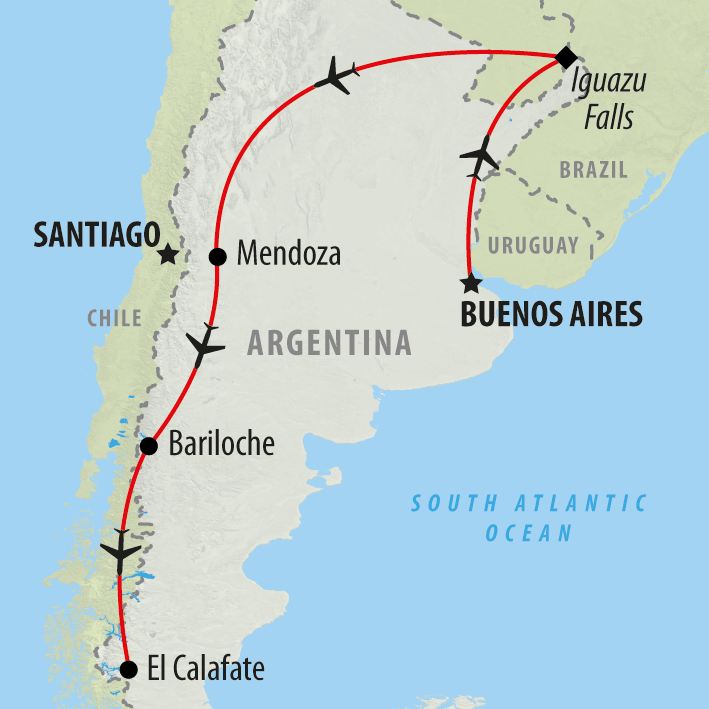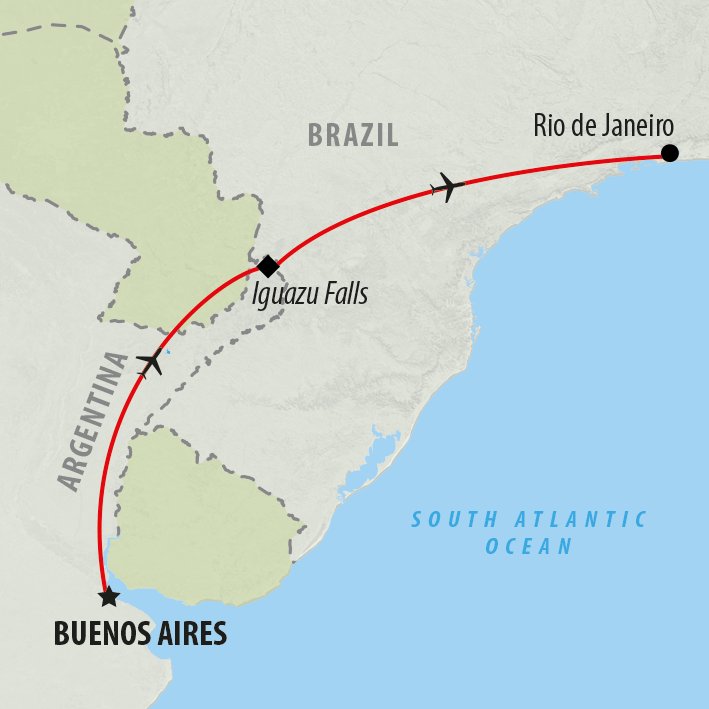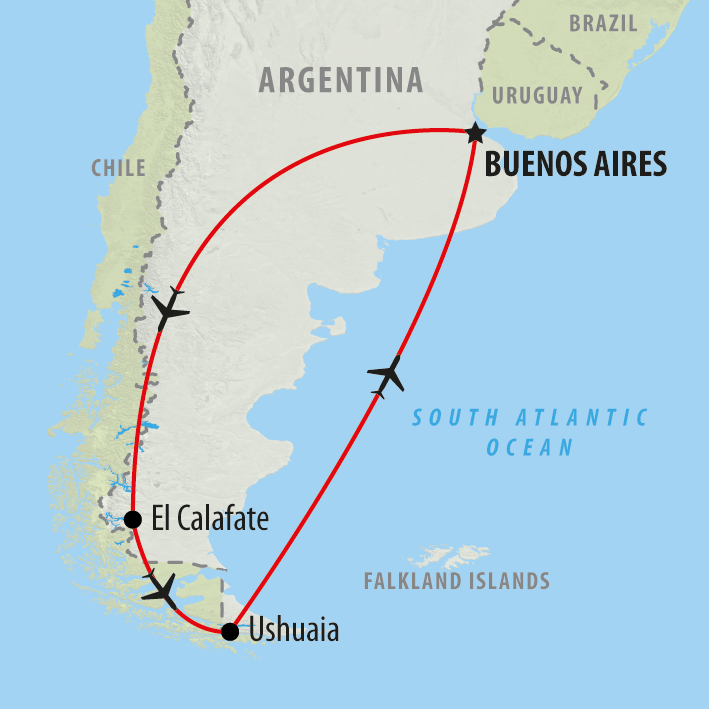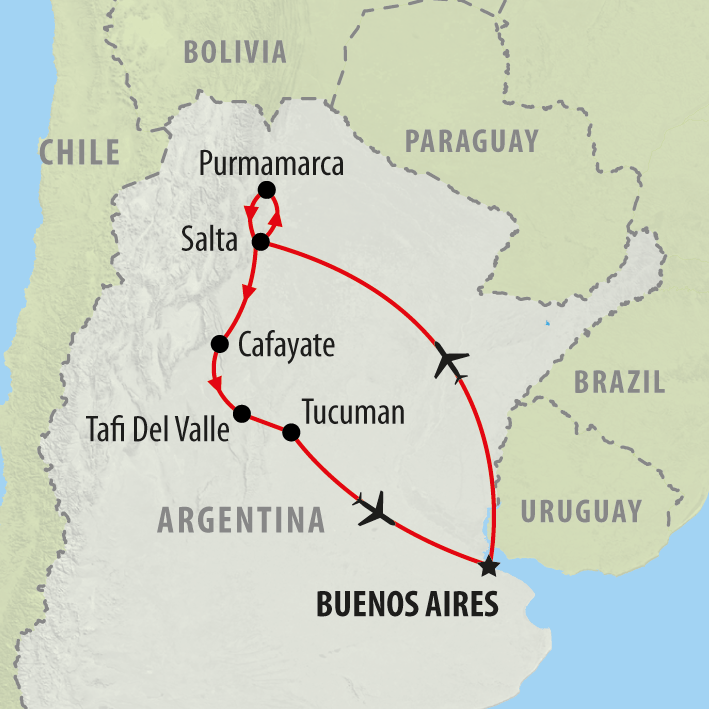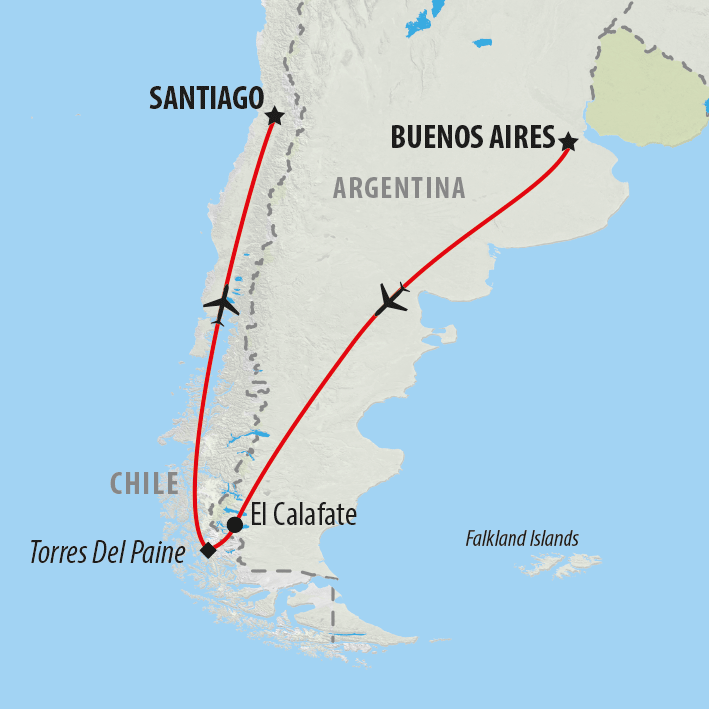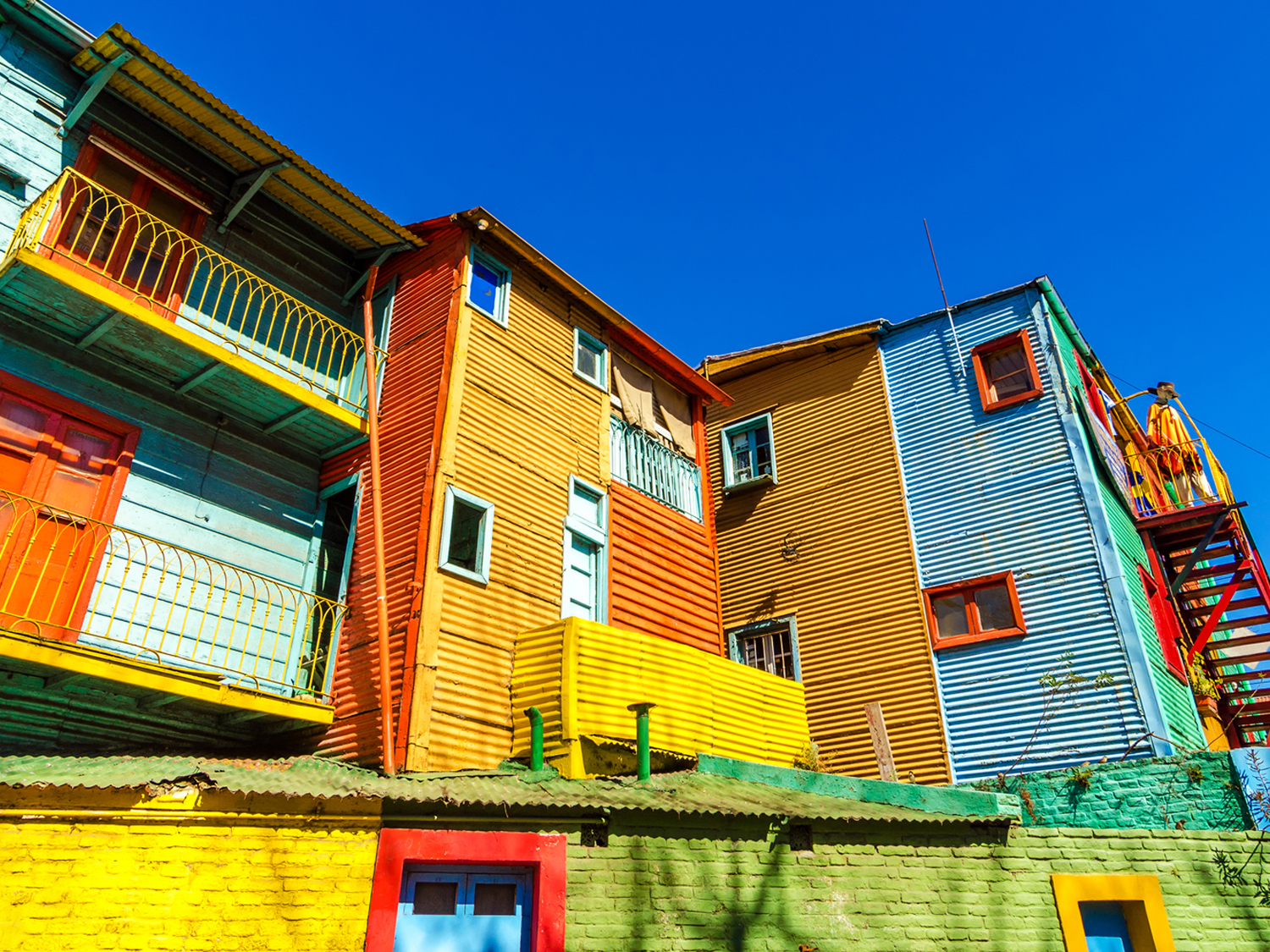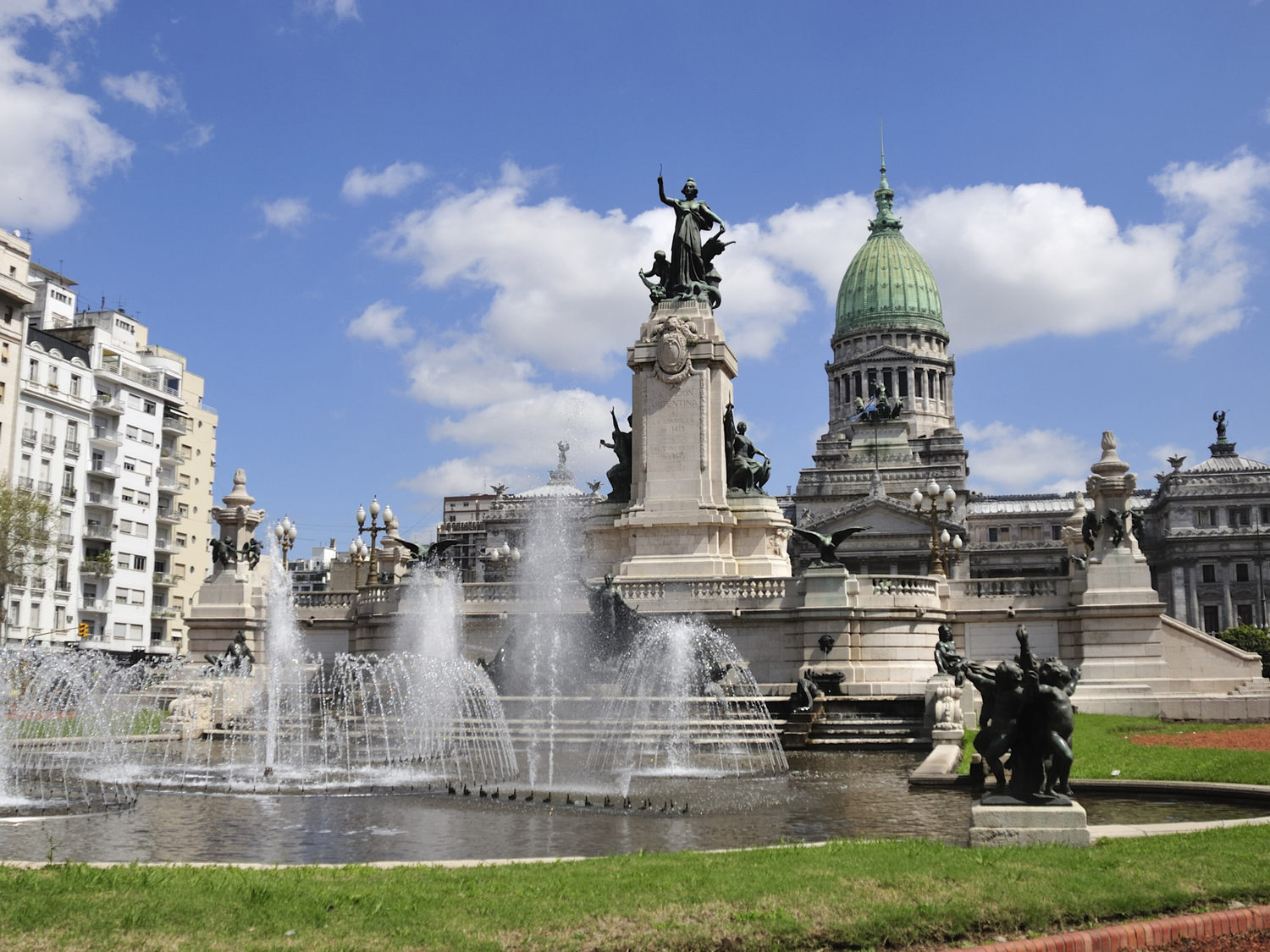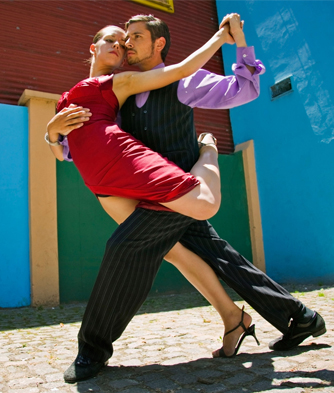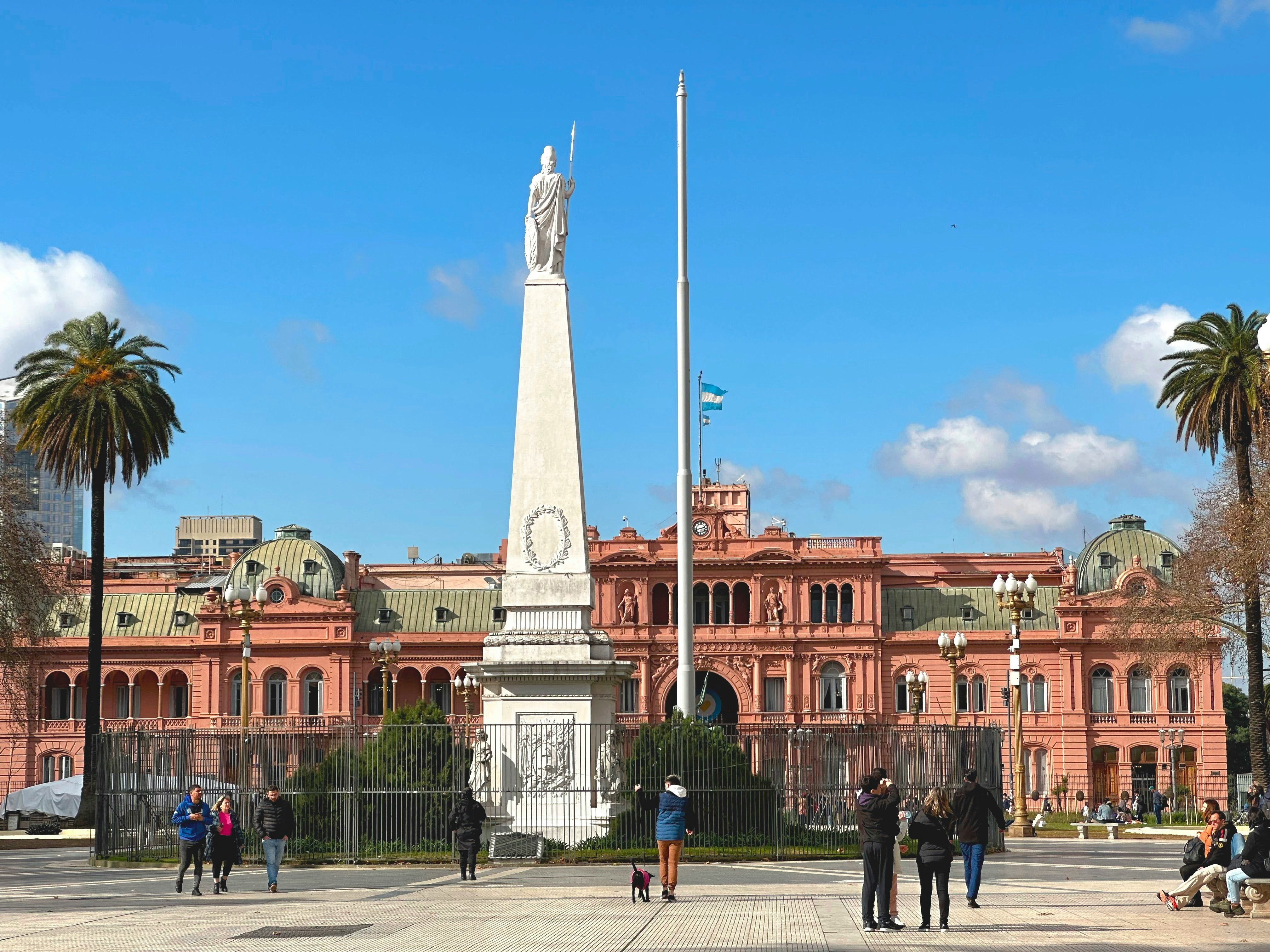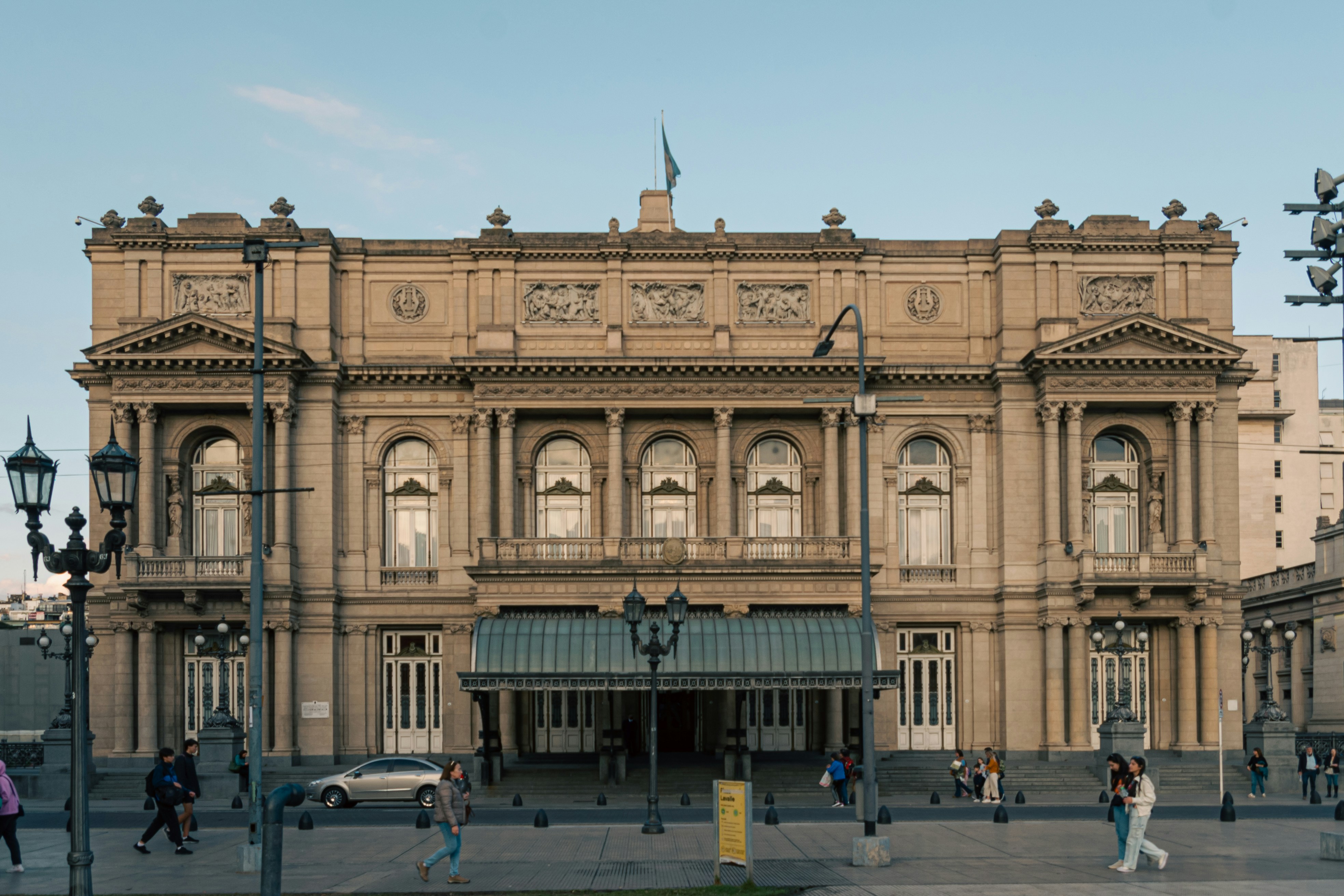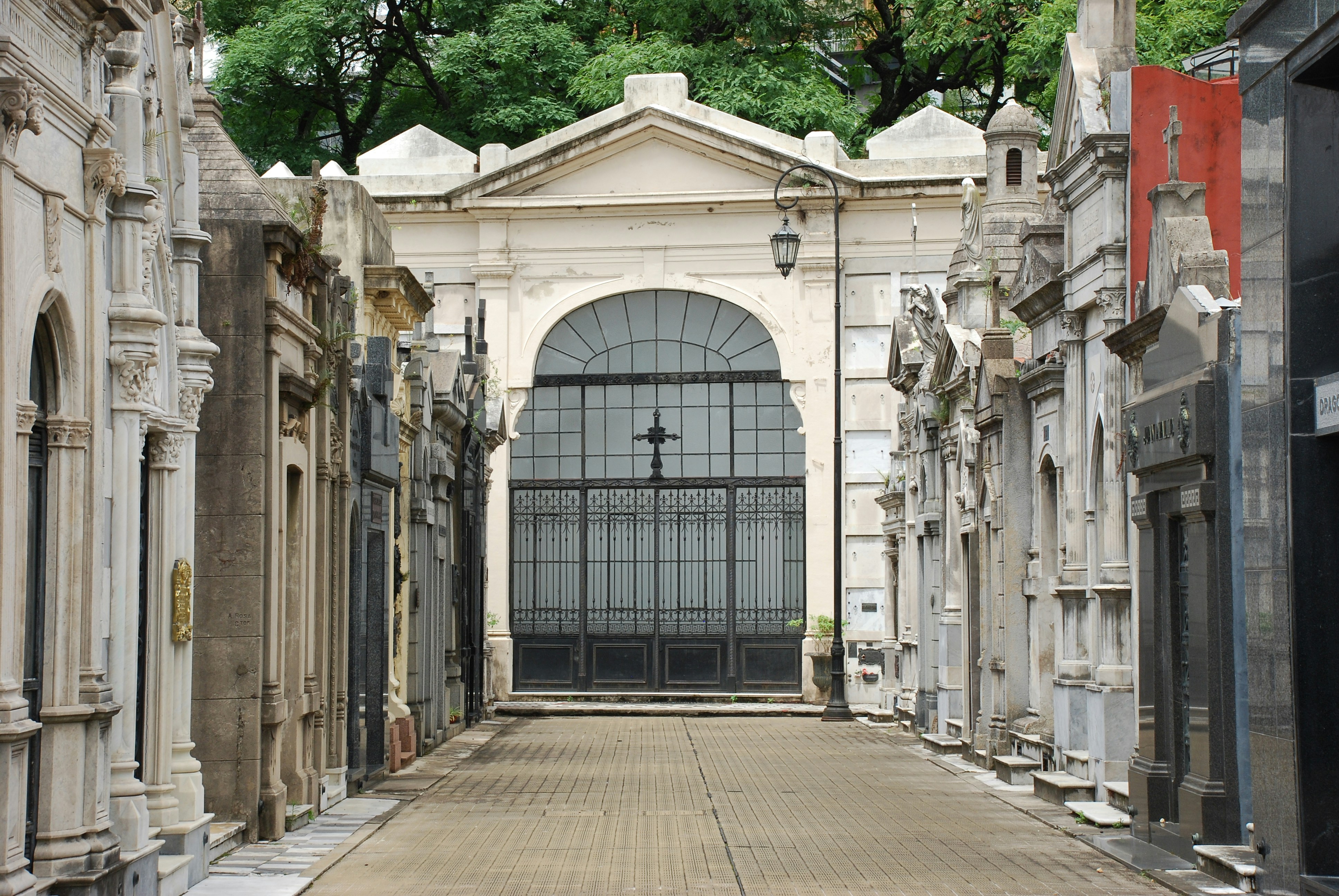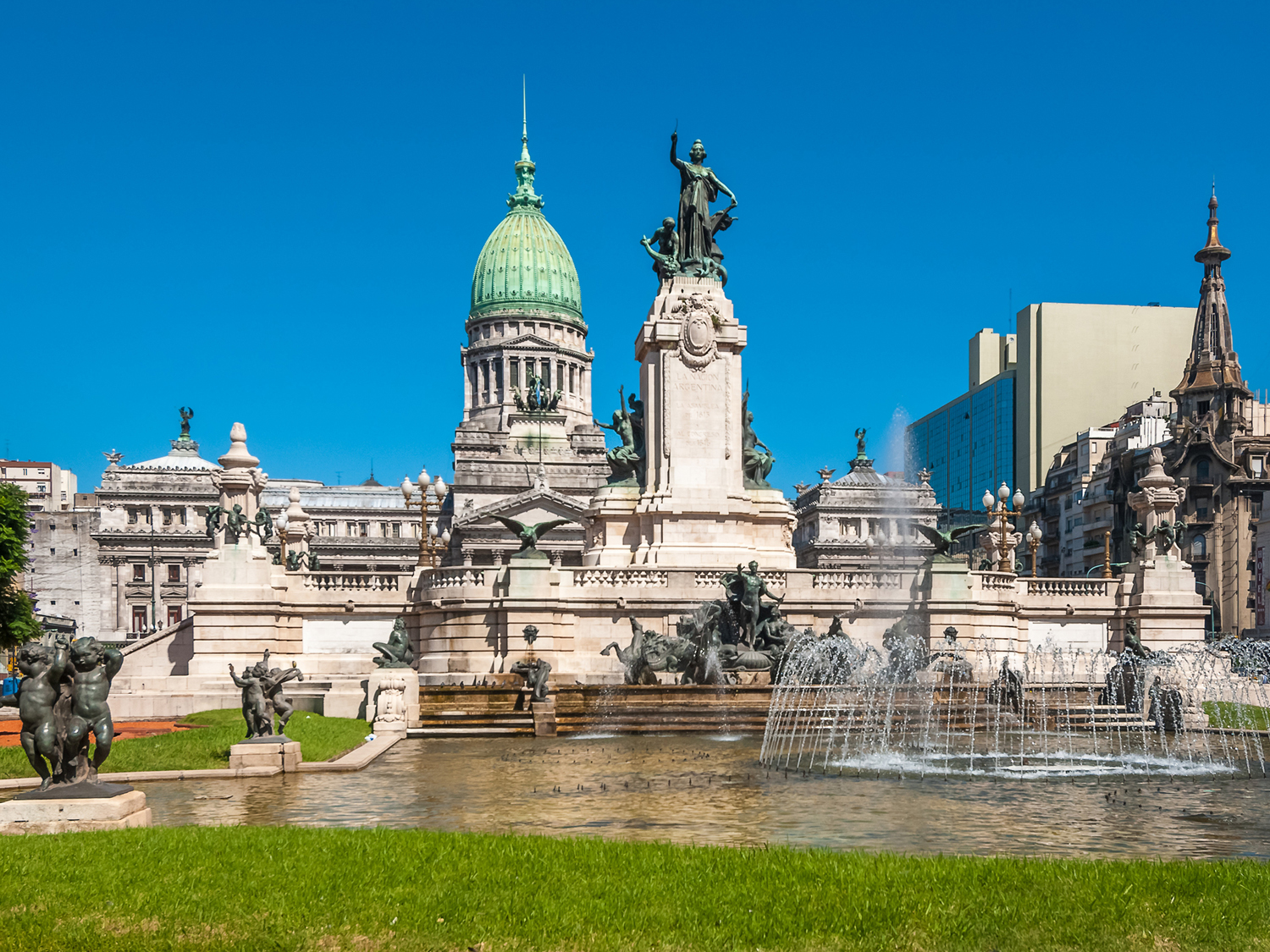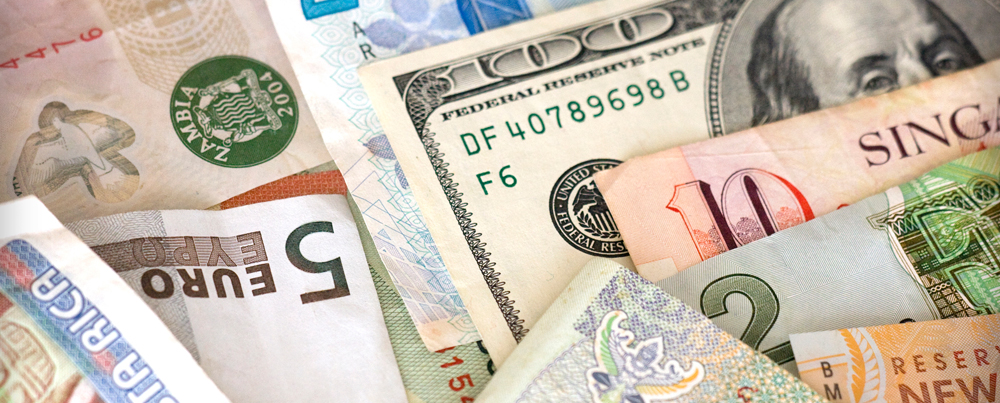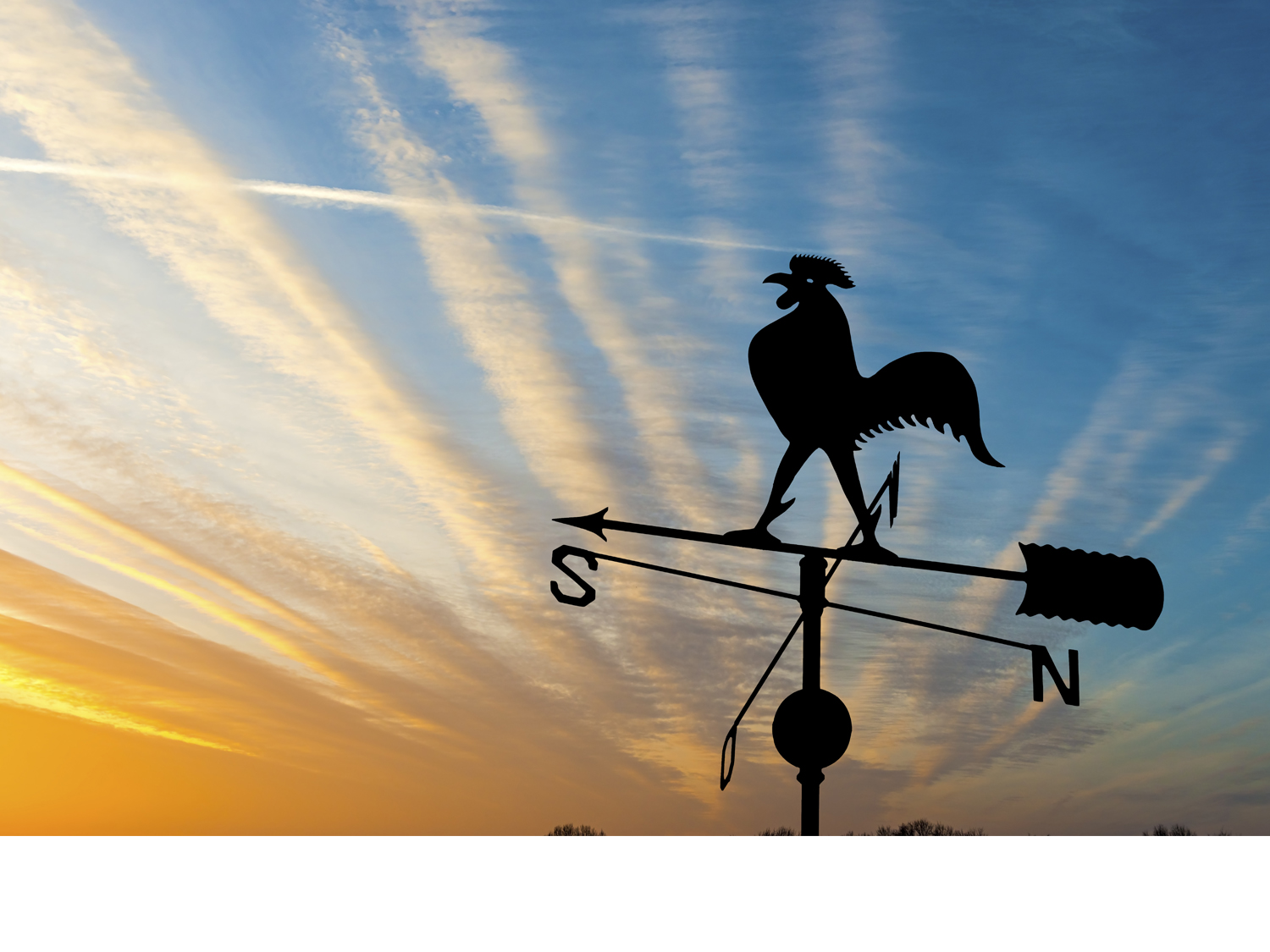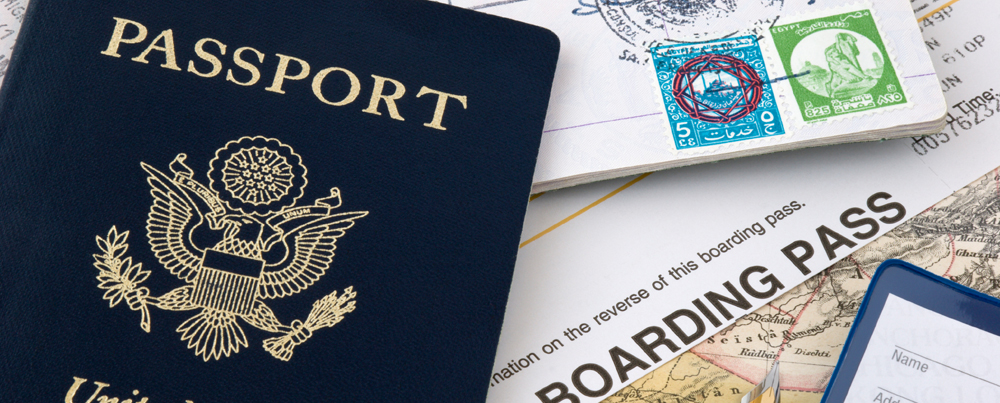Best guided tours to Buenos Aires, ArgentinaExplore Buenos Aires: Top Guided Tours for an Unforgettable Experience
When do you want to go?
2024
I'm flexible
Passengers
Adults (18+)
Children (0 - 17)
Welcome to Buenos Aires, Argentina
Buenos Aires, the capital city of Argentina, is a vibrant metropolis known for its rich cultural heritage, European-style architecture, and dynamic lifestyle. Often referred to as the "Paris of South America," Buenos Aires combines the charm of old-world Europe with the spirit and warmth of Latin America.
Guided tours to Buenos Aires, Argentina
Guided tours in Buenos Aires offer an immersive experience into the city’s rich cultural and historical landscape. These tours often include visits to iconic landmarks such as the Casa Rosada, Teatro Colon, and the colourful Caminito Street in La Boca. They provide insightful narratives about the city’s history, architecture, and local traditions, including tango shows and workshops. Walking tours in neighbourhoods like San Telmo and Recoleta reveal hidden gems and local anecdotes, there are also specialised tours, which focus on specific niches of the city and the country as a whole.
What to expect – Why visit Buenos Aires, Argentina?
Detailed History
Buenos Aires was initially established by Perdo de Mendoza in 1536, but the settlement struggled and was abandoned due to attacks from indigenous people. It was re-established by Juan de Garay in 1580 and began to grow steadily. The city’s strategic location on the Rio de la Plata made it a crucial hub for trade. Throughout the colonial period, Buenos Aires was relatively isolated, leading to a unique cultural and economic center.
The early 19th century saw Buenos Aires become a focal point in the fight for independence from Spanish rule. In 1810, the May Revolution in Buenos Aires marked the beginning of the Argentine War of Independence. By 1816, Argentina had declared its independence, and Buenos Aires continued to grow as the nation’s political, economic, and cultural centre.
Cultural Highlights
Buenos Aires is often considered the cultural capital of Latin America.
Music and Dance: Apart from tango, Buenos Aires is also known for its vibrant milonga (tango dance hall) culture, where locals and tourists gather to dance and enjoy live music. Other music genres, such as folk music, rock, and electronic music, also have strong followings in the city.
Literature: The city’s literary heritage is celebrated in numerous cafes and bookshops, like El Ateneo Grand Splendid, which has been named one of the most beautiful bookshops in the world. Buenos Aires was declared the World Book Capital by UNESCO in 2011, highlighting its literary significance.
Theatre: Buenos Aires boasts one of the highest concentrations of theatres in the world. The Teatro Colon is renowned for its exceptional acoustics and has hosted performances by some of the greatest opera singers and musicians. Additionally, the city has a vibrant independent theatre scene, with numerous smaller venues offering diverse performances.
Art: The city’s art scene is dynamic, with major institutions like the Museo Nacional de Bellas Artes, the MALBA (Museo de Arte Latinoamericano de Buenos Aires), and numerous galleries showcasing both classical and contemporary works. Street art is also a significant cultural expression, with entire neighbourhoods, such as Palermo and La Boca, adorned with murals and graffiti.
Architectural Marvels
Buenos Aires’ architecture reflects its rich history and diverse influences.
Teatro Colon: This world-famous opera house is a marvel of neoclassical design, with exquisite interiors featuring Italian marble, French stained glass, and Venetian mosaics.
Casa Rosada: The presidential palace, known for its distinctive pink colour, is a symbol of Argentina’s political history. It houses the presidential office and is a prominent site for political events and demonstrations.
Catedral Metropolitana: The main Catholic church in Buenos Aires, located in the Plaza de Mayo, combines neoclassical and colonial styles and is the final resting place of General Jose de San Martin, a national hero.
Avenida de Mayo: This grand avenue, inspired by Parisian boulevards, is lined with impressive buildings, including the Palacio Barolo and the historic Café Tortoni, a centre of intellectual and artistic activity.
Cuisine
Parrillas: These steakhouses are the heart of Argentine cuisine, where visitors can enjoy a variety of cuts like bife de chorizo (sirloin steak), ojo de bife (ribeye), and asado de tira (short ribs).
Empanadas: These savoury pastries are filled with beef, chicken, ham and cheese, or other ingredients, and are a popular snack or appetiser.
Dulce de Leche: This sweet caramel spread is used in various desserts, including alfajores (shortbread cookies filled with dulce de leche), ice cream, and pastries.
Italian Influence: Due to a large Italian immigrant population, Buenos Aires boasts excellent pasta, pizza, and gelato. The city’s unique pizza style is thick-crusted and generously topped, often with faina, a chickpea flatbread, on the site.
Festivals and Events
Buenos Aires International Festival of Independent Cinema (BAFICI): This annual event showcase a wide range of independent films from around the world, attracting filmmakers and cinema enthusiasts.
Buenos Aires Tango Festival: The city’s passion for tango is celebrated with performances, competitions and dance classes, culminating in the World Tango Dance Tournament.
Carnaval Porteno: Buenos Aires has its version of Carnival, featuring parades, music, and dancing in the streets, particularly in neighbourhoods like San Telmo and Bodeo.
Feria de Mataderos: This weekly market celebrates Argentine rural traditions, with folk music, dancing, crafts, and food stalls offering traditional dishes.
Popular Sites to See in Buenos Aires
Plaza de Mayo
The historic heart of Buenos Aires, Plaza de Mayo, is surrounded by significant buildings such as the Casa Rosada (Presidential Palace), the Metropolitan Cathedral, and the Cabildo (Colonial Town Hall). This square has been the focal point of many pivotal events in Argentina’s history, including the country’s struggle for independence.
Teatro Colon
Renowned as one of the world's finest opera houses, Teatro Colon is celebrated for its stunning acoustics and opulent design. Visitors can take guided tours to explore its grandiose interiors, including the ornate foyer, majestic auditorium, and luxurious VIP rooms.
Recoleta Cemetery
This sprawling and intricately designed cemetery is famous for its elaborate mausoleum and tombs, including that Eva Peron, Argentina’s beloved First Lady. The cemetery is an architectural marvel and a serene spot to learn about Buenos Aires’ prominent figures.
Frequently asked questions
What is the best time to visit Buenos Aires?
The best time to visit Buenos Aires is during the spring (September to November) and fall (March to May) when the weather is mild and pleasant. Summer (December to February) can be hot and humid, while winter (June to August) is generally cooler and drier.
What language is spoken in Buenos Aires?
Spanish is the official language of Buenos Aires. English is commonly spoken in tourist areas and by some service providers, but it's helpful to know some basic Spanish phrases.
What currency is used in Buenos Aires?
The currency used in Buenos Aires is the Argentine Peso (ARS). Credit cards are widely accepted, but it's advisable to carry some cash for smaller purchases and in markets.
Is Buenos Aires safe for tourists?
Buenos Aires is generally safe for tourists, but like any major city, it’s important to stay aware of your surroundings. Avoid displaying valuables, be cautious in crowded areas, and use reputable transportation options.
What should I try to eat in Buenos Aires?
Must-try foods include Argentine steak (asado), empanadas, dulce de leche desserts, choripán (sausage sandwich), and traditional pizzas and pastas influenced by Italian cuisine. Don’t miss out on experiencing a tango show and enjoying some local wine.
What are the local customs and etiquette I should be aware of?
Greetings are typically done with a single kiss on the right cheek, even in business settings. Argentinians value punctuality but may have a more relaxed attitude towards time socially. Tipping is customary in restaurants (10-15%) and for other services.
Can I drink tap water in Buenos Aires?
Yes, tap water in Buenos Aires is generally safe to drink. However, if you have a sensitive stomach, you might prefer bottled water.
Are there any local customs or taboos I should be aware of?
Avoid discussing sensitive topics such as the Falkland Islands dispute, and be respectful of local customs and traditions. Dress modestly when visiting religious sites, and be aware that personal space can be more relaxed in social settings.
Argentina guides
Our useful travel guides for Argentina, to help you plan your trip to South America.
Our customers say
Excellent
4.4 out of 5 based on 275 reviews
